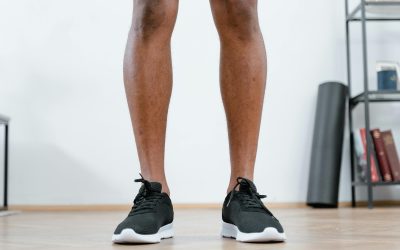If you’ve done an internet search for some of the symptoms of varicose veins, you might have come across one abbreviation: DVT, short for deep vein thrombosis.
While varicose veins and deep vein thrombosis both impact your veins, they do so in very different ways—and understanding these differences is important for your health.
The two conditions have different causes, symptoms, and treatments, with DVT being significantly more dangerous than varicose veins.
As vein specialists in the Milwaukee, Wisconsin area, we want to raise awareness about the dangers of DVT and make sure people understand the right steps to take if they suspect they’ve developed the condition.
Here’s what you need to know to identify and manage varicose veins versus deep vein thrombosis.
Varicose Veins
Varicose veins are swollen, twisted veins that usually appear on the legs. They develop when valves in the veins get weaker which, in turn, stops blood flow, allowing blood to pool and the veins themselves to enlarge.
Common symptoms include visible, bulging veins that are often blue or dark purple and can be seen just under the skin.
Many people with varicose veins also experience aching or heavy legs, especially after standing or sitting for long periods of time.
Additionally, swelling and cramps in the lower legs are common, particularly at night, and the skin around varicose veins may itch or become discolored.
Varicose veins are generally not serious, but they can cause discomfort and cosmetic concerns.
Once one starts to develop varicose veins, there are methods they can employ to limit their spread.
For example, one trying to limit the growth of varicose veins could consider implementing lifestyle changes like exercising, wearing compression stockings, and avoiding sitting or standing for too long.
For those who want a more permanent solution, highly effective and fairly non-invasive treatments are widely available, such as sclerotherapy or laser therapy.
Deep Vein Thrombosis (DVT)
DVT is a significantly more serious condition where a blood clot forms in a deep vein, usually in the legs.
Where the real danger lies, is if this blood clot breaks loose. When that happens, the clot can travel to the lungs and cause a pulmonary embolism, which is life-threatening.
Symptoms of DVT include significant swelling, usually in one leg, and pain or tenderness that often starts in the calf and can feel like cramping or soreness. The affected area might feel warm and look red or discolored.
Certain factors can increase your risk of developing DVT. Old age, pregnancy, and the use of birth control pills are a few risk factors worth mentioning.
Additionally, lifestyle habits like long periods of immobility, such as sitting during long flights or car rides, can also contribute to the risk. Health conditions including lupus, cancer, heart disease, or a serious COVID-19 infection can also make you more prone to DVT.
Because of its dangers, DVT requires immediate medical attention. Fortunately, DVT treatment is highly effective and fast-acting. It typically involves providing blood thinners to prevent clots from growing and new ones from forming. In some cases, doctors might use clot busters or surgery to remove the blood clot.
If you notice the symptoms of DVT, we advise you to seek help from your doctor right away.
Key Differences
While varicose veins are quite easy to detect, as they appear discolored on the surface of the skin, deep vein thrombosis is trickier to identify.
One major distinction is that, with DVT, the affected area may be red or discolored, but the veins won’t necessarily bulge as they do with varicose veins.
Additionally, with DVT, the area of the blood clot can feel sore, tender to the touch, and have a warm sensation, while varicose veins often feel itchy or slightly uncomfortable.
However, up to 50% of those with DVT don’t experience any symptoms, making it even more important to be vigilant. If you notice significant swelling, pain, or tenderness in one leg, or if the area feels warm, contact a medical professional immediately, as early detection and treatment are critical to prevent serious complications.
Conclusion
Understanding these two conditions, and acting quickly to identify them, can make all the difference in terms of treatment.
Varicose veins can be uncomfortable, but are usually not dangerous, and can be treated with fairly non-invasive options. In contrast, DVT is a serious condition that requires immediate medical attention due to the risk of a life-threatening pulmonary embolism.
Recognize that varicose veins develop slowly and are visible, causing symptoms like aching and swelling. DVT, however, can come on suddenly, with significant swelling, pain, and redness, usually in one leg.
If you’ve determined that your issues are stemming from varicose veins, or if you have questions about a vein issue, reach out to us. We will be happy to help you manage your vein issues and put an end to your spider and varicose veins.



